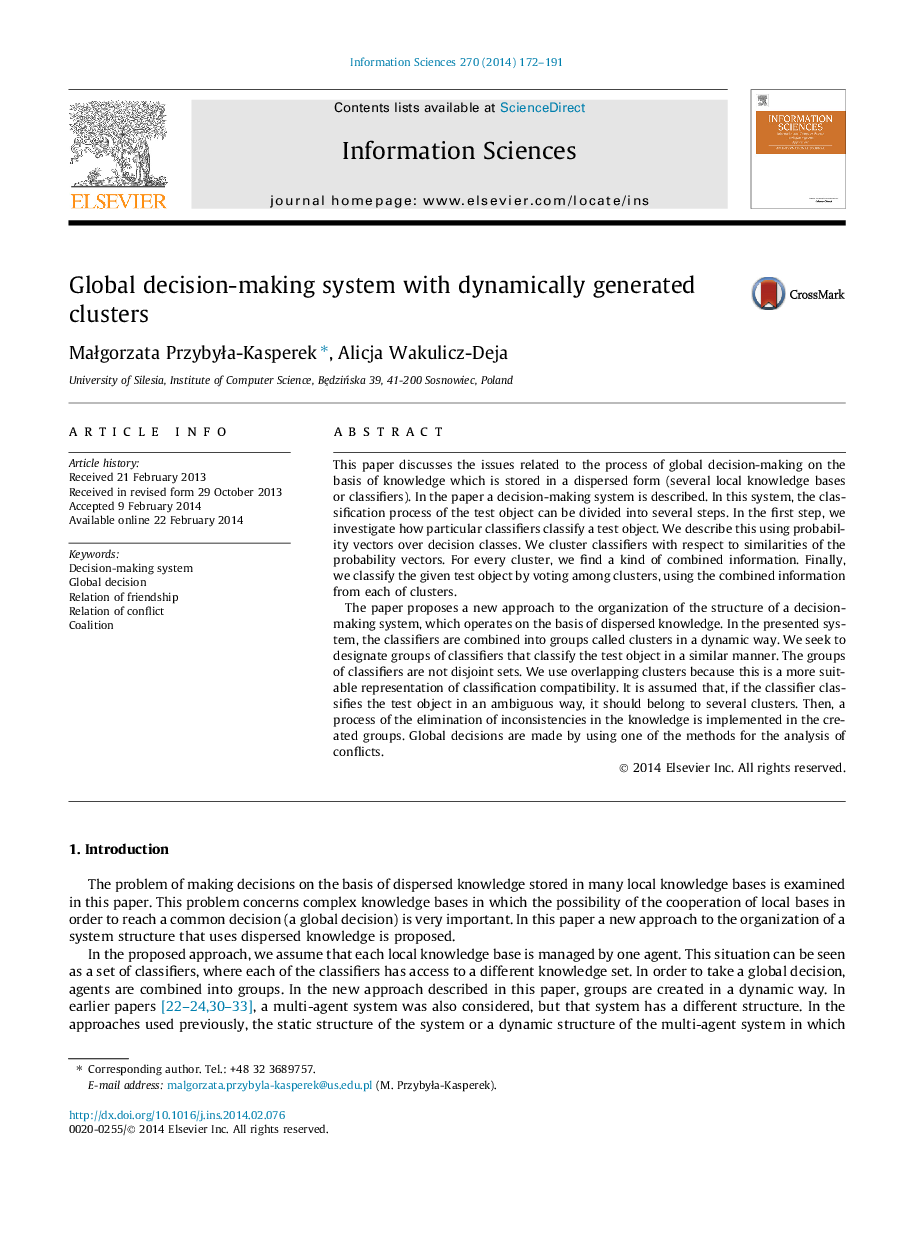| Article ID | Journal | Published Year | Pages | File Type |
|---|---|---|---|---|
| 393942 | Information Sciences | 2014 | 20 Pages |
•New approach to the organization of dispersed decision system structure was proposed.•The local knowledge bases, which are in a friendship relation, are grouped.•The groups of local knowledge bases will be generated in a dynamic way.•Process of elimination inconsistencies in knowledge are implemented in groups.•Global decisions are made by using one of the methods for analysis of conflicts.
This paper discusses the issues related to the process of global decision-making on the basis of knowledge which is stored in a dispersed form (several local knowledge bases or classifiers). In the paper a decision-making system is described. In this system, the classification process of the test object can be divided into several steps. In the first step, we investigate how particular classifiers classify a test object. We describe this using probability vectors over decision classes. We cluster classifiers with respect to similarities of the probability vectors. For every cluster, we find a kind of combined information. Finally, we classify the given test object by voting among clusters, using the combined information from each of clusters.The paper proposes a new approach to the organization of the structure of a decision-making system, which operates on the basis of dispersed knowledge. In the presented system, the classifiers are combined into groups called clusters in a dynamic way. We seek to designate groups of classifiers that classify the test object in a similar manner. The groups of classifiers are not disjoint sets. We use overlapping clusters because this is a more suitable representation of classification compatibility. It is assumed that, if the classifier classifies the test object in an ambiguous way, it should belong to several clusters. Then, a process of the elimination of inconsistencies in the knowledge is implemented in the created groups. Global decisions are made by using one of the methods for the analysis of conflicts.
